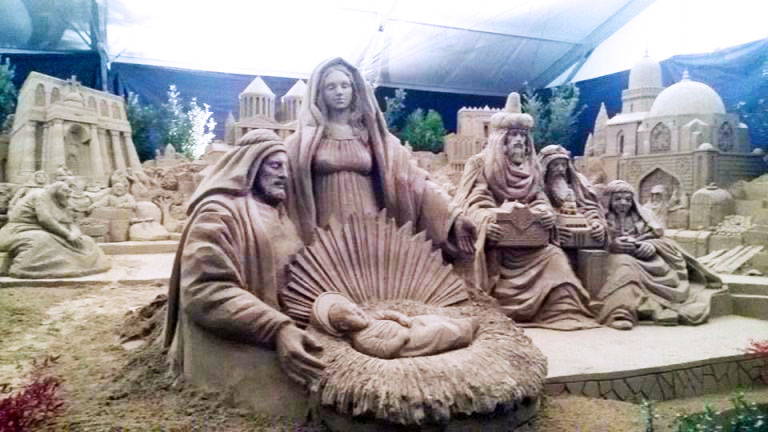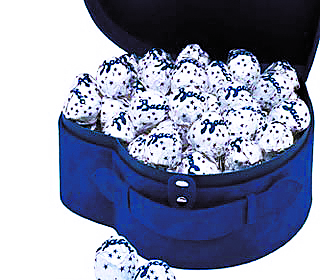Christmas celebrations in Italy are as different and varied as the rich foods and unique dialects of the nation. Each of the 20 regions claims its own traditions and customs in observance of the holiest time of year.
In Part III of our “Christmas in Italy” series we are featuring the central regions of Italy: Emilia-Romagna, Lazio, Liguria, Marche, Sardinia, Tuscany and Umbria.
Emilia-Romagna
This Italian region is known as the gastronomic capital of the nation, which is quite an accomplishment for a country that is renowned the world over for its food. It is no surprise that here, Christmas celebrations are centered on authentic, traditional foods in commemoration of God’s gifts, family togetherness and the holiday spirit of giving and sharing. From the arcades of Bologna to the Ferrara Castle; from the UNESCO monuments in Ravenna to the historic city of Parma and Piacenza Duchy, the cities of Emilia Romagna in the winter holidays have a magical atmosphere.
Since the Middle Ages, Piazza Maggiore has been Bologna’s beating heart and for the holidays, the city embellishes the square with a Christmas Tree featuring different decorations each year. This year it is a red spruce, decorated with red and gold bulbs and topped with a 3-D comet. The tree is always placed near the Neptune Fountain, one of the most beautiful Renaissance fountains of Italy, which will reopen to the public after a long restoration on December 22.
Piazza Santo Stefano is another fascinating square of the region’s capital. It is dominated by a religious complex known as Sette Chiese (Seven Churches). During the Christmas season, locals and tourists alike visit to admire the amazing terracotta nativity display in the Church of St. Vitale and Agricola. This Nativity represents places and churches of Bologna such as San Luca and some of the statues date back to the 13th century.
Lazio
The region is the home of Rome, the Italian capital city and an amazing place to visit during the Christmas season. It is also in Lazio, within the small hill town of Greccio, that the first Nativity scene was displayed and has become one of the most important Christmas customs in all of Italy. The procession to Greccio, lighted by torches back in 1223, is considered the first Corteo di Natale (Christmas Procession) in history and is recreated each year on Christmas Eve.
The Christmas season began in Rome on December 8th, when Castel Sant’Angelo fired a cannon to signify the beginning of the Holy Season. Of course, an Italian Christmas is not complete without an authentic Roman celebration. The annual Christmas market in the Piazza Navona, one of the most wonderful in Italy, offers thousands of unique Presepio figurines, as well as plenty of shopping opportunities, ranging from sweets to gifts. Each neighborhood in Rome tries to outdo the other by displaying the biggest Presepio, but in St. Peter’s Square, within Vatican City, is where the largest Nativity scene can be found, but is only unveiled to the world on Christmas Eve. Thousands of tourists, locals and pilgrims flock to the Square to hear the Pope celebrate Midnight Mass on Christmas Eve, as they have for hundreds of years. Additionally, the St. Peter’s Square Christmas Tree has become a famous and favorite scene for the faithful around the world.
Liguria
During Christmas, residents and visitors to Genoa can stroll through the market of Saint Porphyrius, where craftsmen display their products in the streets and squares of the old town or meander through the Mercato di San Nicolo. Two must-see attractions are the traditional lighting of the Christmas Tree donated by the Fiemme Valley of the Trentino Alto Adige region and also the Confuego, an old tradition of setting alight a large bay tree log, a gift to the Doge of the city by the People’s Representative. One of the favorite sweets to buy at the market is Pan Dolce Genovese, or panettone Genovese. This sweet bread is much different than the usual panettone and pan forte found on Christmas menus. Pan dolce Genovese has ancient origins when the preparation of the bread was a ritual in which the entire family participated. The women prepared it and if the house was too cold, they carried it to bed with them because it needed to rise in a warm place). The youngest of the family carried the pan dolce adorned with a branch of bay laurel to the table and the oldest of the family cut portions out of it after all had kissed the cake. The first slice was saved for the first beggar who would come to the door. Nowadays, it can be found in pastry shops throughout the city, as well as at the holiday markets.
Le Marche
The Marche region is one that seems in great part to remain untouched by time and it is here that Christmas traditions have been retained over centuries, with celebrations held each year in the style of the ancients.
The town of Loreto plays an important role in the Christmas story as the home of the Santa Casa (Holy House), the home in which Jesus spent his childhood. According to Church tradition, the house was carried from Nazareth to Loreto by angels on December 10, 1294. It is now enshrined in the town’s Basilica di Santa Casa. Every year in December, Loreto residents light bonfires on the beaches of the city to commemorate the angels’ journey across the sea to the Italian peninsula. Le Marche is also a famous center of the presepio craft. The Mostra Nazionale in Sant’angelo in Pontano exhibits a collection of over 100 splendid presepe during the Christmas season.
Sardinia
The island of Sardinia is the most scarcely populated of all the regions of Italy. Here, is a spiritual season dedicated to the Church, family and giving.
Santa Lucia, whose Feast Day was December 13, is beloved throughout Sardinia. St. Lucy is venerated throughout the month of December. The village of Nurachi Tempio hosts the largest Festa di Santa Lucia on the island, where all are invited for a feast with dancing and a traditional procession of the saint’s statue.
In Siamaggiore, a living presepio demonstration and procession is held every year during the weekend before Christmas. The magnificent festival is celebrated by all town residents over two days in traditional dress and with meals prepared from only foods grown from the earth.
Olbia, one of Sardinia’s more modern towns, creates a winter village that remains open from the Immaculate Conception through the week following the Epiphany. The village features a skating rink, life-sized igloos and a Christmas tree. Since it rarely snows on the island, synthetic snow is used to create the proper atmosphere.
It is a tradition for Sardinians to fast from December 23 at sunset through sunset on December 24 in preparation for the holy night of Christmas Eve. As the sun fades over the Mediterranean Sea, families gather around their homemade presepio to pray for the coming of the Christ Child and offer traditional songs in celebration of their faith. Following this ancient ritual, dinner and the wonderful commemoration of Christmas begins.
Tuscany
One of Italy’s most well-traveled regions, Tuscany is often seen as the embodiment of the nation’s lifestyle and culture. Here you will find that traditions range from spiritual and religious to modern and sophisticated.
When visiting Florence during the Christmas season, you will find that the holiday spirit is evident in every piazza and along every narrow street. Thousands of lights are strung from building to building, casting a heavenly glow upon every architectural marvels of the city. Traditional presepio displays are seen in every storefront and a large holiday mercato is held in the Piazza Santa Croce. Florence’s Duomo, which is the second-most visited church in Italy hosts a magnificent Christmas Mass each year. For Americans traveling to Florence during the Christmas season, the Duomo also offers several English Masses.
In the city of Prato, the Duomo di Santo Stefano houses La Sacra Cintola or “The Holy Girdle,” which was the sacred garment worn by the Madonna and brought to the city in the 12th century. Every year on December 25 and 26, the relic is presented to crowds of the faithful in the Duomo’s piazza.
Along the coast, the city of Livorno features an ice skating rink in the Piazza della Repubblica that serves as a setting for holiday stories and legends. Performances take place on the ice, with skaters blending acrobatic artistry with heartwarming tales of the Christmas season. The Piazza also features a large Christmas tree made from a 65 foot-tall pole that is also used in the city’s Palio dell’Antenna boat race that takes place annually in July.
Umbria
As the neighbor of Tuscany and Le Marche, Umbria has Christmas traditions all its own. Umbria’s Città di Castello hosts a unique Christmas celebration. Each year on Christmas Eve, local residents dress as Father Christmas and travel in lighted canoes along the Tiber River to Porta San Florido, where they distribute gifts to Umbrian children. In Corciano, tradition calls upon local artisans to teach others how to build their own homemade presepio and Christmas ornaments. This year, the event took place on December 15 and also included lessons on creating Christmas floral center pieces and how to set the table for Christmas.
The people of Gubbio hold the record for the largest albero di Natale in the world and no trees are damaged when constructing the world’s largest Christmas tree. Made entirely of lights strung among the trees on the slope of Mount Ingino, the outline of the lit tree can be seen from miles away and it best appreciated at a distance. First created by the town in 1981 to honor the town’s patron Saint Ubaldo, hundreds of lights are strung, topped by a three foot high star. From top to bottom, the tree is over 2,600 feet tall and on a clear night is visible from over 30 miles away. It is switched on at dusk during the evening of December 7th and continues to be relit every night until the Epiphany on January 6th.





